
Philip II, known as Philip Augustus, was King of France from 1180 to 1223. His predecessors had been known as kings of the Franks, but from 1190 onward, Philip became the first French monarch to style himself "King of France". The son of King Louis VII and his third wife, Adela of Champagne, he was originally nicknamed Dieudonné (God-given) because he was a first son and born late in his father's life. Philip was given the epithet "Augustus" by the chronicler Rigord for having extended the crown lands of France so remarkably.

Philip the Bold was Duke of Burgundy and jure uxoris Count of Flanders, Artois and Burgundy. The fourth and youngest son of King John II of France and his wife, Bonne of Luxembourg, Philip was the founder of the Burgundian branch of the House of Valois. His vast collection of territories made him the undisputed premier peer of the kingdom of France and made his successors formidable subjects, and sometimes rivals, of the kings of France.

Baldwin I was the first emperor of the Latin Empire of Constantinople. As Count of Flanders and Hainaut, he was one of the most prominent leaders of the Fourth Crusade, which resulted in the sack of Constantinople and the conquest of large parts of the Byzantine Empire, and the foundation of the Latin Empire. He lost his final battle to Kaloyan, the emperor of Bulgaria, and spent his last days as his prisoner.
The count of Flanders was the ruler or sub-ruler of the county of Flanders, beginning in the 9th century. The title was held for a time by the rulers of the Holy Roman Empire and Spain. During the French Revolution in 1790, the county of Flanders was annexed to France and ceased to exist. In the 19th century, the title was appropriated by Belgium and granted twice to younger sons of Belgian kings. The most recent holder died in 1983.

Philip of Alsace was count of Flanders from 1168 to 1191. He succeeded his father Thierry of Alsace.

Robert I of Flanders, known as Robert the Frisian, was count of Flanders from 1071 to his death in 1093.

Philip of Rouvres was the Count of Burgundy and Count of Artois from 1347, Duke of Burgundy from 1349, and Count of Auvergne and Boulogne from 1360. He was the only son of Philip, heir to the Duchy of Burgundy, and Joan I, heiress of Auvergne and Boulogne.
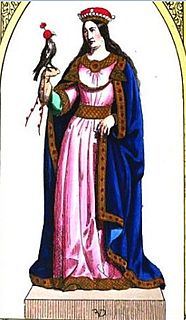
Margaret I of Flanders was ruling countess of Flanders suo jure from 1191 to her death. She was the daughter of Thierry, Count of Flanders, and Sibylla of Anjou, and the heiress of her childless brother, Philip of Flanders.
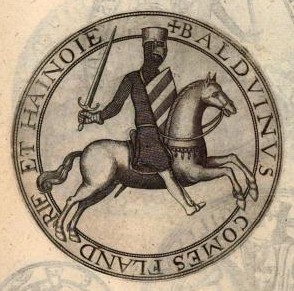
Baldwin V of Hainaut was count of Hainaut (1171–1195), margrave of Namur as Baldwin I (1189–1195) and count of Flanders as Baldwin VIII (1191–1195).

Margaret III was the last Countess of Flanders of the House of Dampierre, as well as Countess of Artois and Countess of Burgundy. She was the only surviving child and heir of Louis II, Count of Flanders (1346–1384) and Margaret of Brabant.
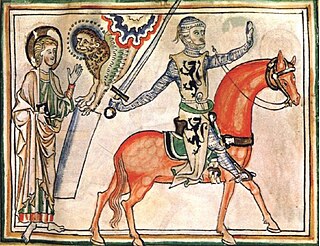
Guy of Dampierre was the Count of Flanders (1251–1305) and Marquis of Namur (1268–1297). He was a prisoner of the French when his Flemings defeated the latter at the Battle of the Golden Spurs in 1302.
The Count of Artois was the ruler over the County of Artois from the 9th century until the abolition of the countship by the French revolutionaries in 1790.

Theresa of Portugal was Countess of Flanders by marriage to Philip I, Count of Flanders, and Duchess of Burgundy by marriage to Odo III, Duke of Burgundy. She was the daughter of the Portuguese king Afonso I and Matilda of Savoy. She served as co-regent of Portugal with her brother during the illness of their father Afonso I of Portugal from 1172 until 1173, and regent of Flanders during the interim period after the death of her spouse and the accession of his heir.

Louis II of Flanders, also known as Louis of Male, a member of the House of Dampierre, was Count of Flanders, Nevers and Rethel from 1346 as well as Count of Artois and Burgundy from 1382 until his death.
Adela of France, known also as Adela the Holy or Adela of Messines;, was, by marriage, the Duchess of Normandy, Countess of Flanders (1035–1067).
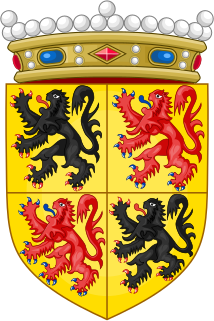
The Count of Hainaut was the ruler of the county of Hainaut, a historical region in the Low Countries. In English-language historical sources, the title is often given the archaic spelling Hainault.

Male Castle is a former castle in Male, once a separate village, now part of Sint-Kruis, a suburb of Bruges, West Flanders, Belgium. The buildings, almost entirely rebuilt and restored after the destruction of World War II, have housed St. Trudo's Abbey (Sint-Trudoabdij) since 1954.

The House of Flanders—also called the Baldwins —was founded by Baldwin I Iron Arm, husband of Judith, daughter of Charles the Bald.
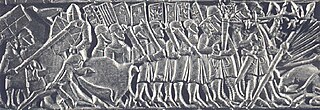
The Franco-Flemish War was a conflict between the Kingdom of France and the County of Flanders between 1297 and 1305.

The County of Flanders was a historic territory in the Low Countries.
















